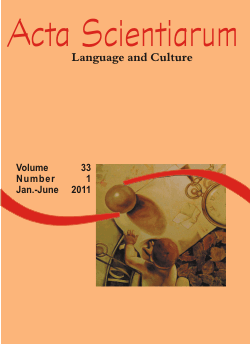<b>Gender, migration and agency: developing a “hauntology” of new becomings in Shauna Singh Baldwin’s <em>Devika</em> and in Ginu Kamani’s <em>Just between Indians</em></b> - doi: 10.4025/actascilangcult.v33i1.9852
Resumo
In recent short stories written by diasporic Indian women writers, changes in terms of location or national identity are generally depicted as providing significant opportunities for Indian women to challenge and revise culturally-inscribed gender roles. In two collections of short stories written respectively by Ginu Kamani and Shauna Singh Baldwin, Junglee Girl and English Lessons and Other Stories, not only are ghosts employed to rupture boundaries between the living and the dead, but they also represent enabling presences which authorize female voices by resurrecting stories of women that have been silenced or forgotten. In these two books, the emergence of the archaic is recurrently tinged with liberating undertones since it opens up new spaces for identity by countering gendered expectations of ‘acceptable’ behaviour and by constructing alternative realities. My essay will therefore focus on the central metaphors of female ghosts and doubles as transitional figures through which women in transit empower themselves. My aim is to show how culturally displaced women appropriate the uncanny so as to engender new identities and assert the value of individual female experience. In these haunted narratives, I will contend, women move from a ghostly time of repetition to a ‘hauntology’ of new becomings.Downloads
DECLARAÇÃO DE ORIGINALIDADE E DIREITOS AUTORAIS
Declaro que o presente artigo é original, não tendo sido submetido à publicação em qualquer outro periódico nacional ou internacional, quer seja em parte ou em sua totalidade.
Os direitos autorais pertencem exclusivamente aos autores. Os direitos de licenciamento utilizados pelo periódico é a licença Creative Commons Attribution 4.0 (CC BY 4.0): são permitidos o acompartilhamento (cópia e distribuição do material em qualqer meio ou formato) e adaptação (remix, transformação e criação de material a partir do conteúdo assim licenciado para quaisquer fins, inclusive comerciais.
Recomenda-se a leitura desse link para maiores informações sobre o tema: fornecimento de créditos e referências de forma correta, entre outros detalhes cruciais para uso adequado do material licenciado.




















6.png)









